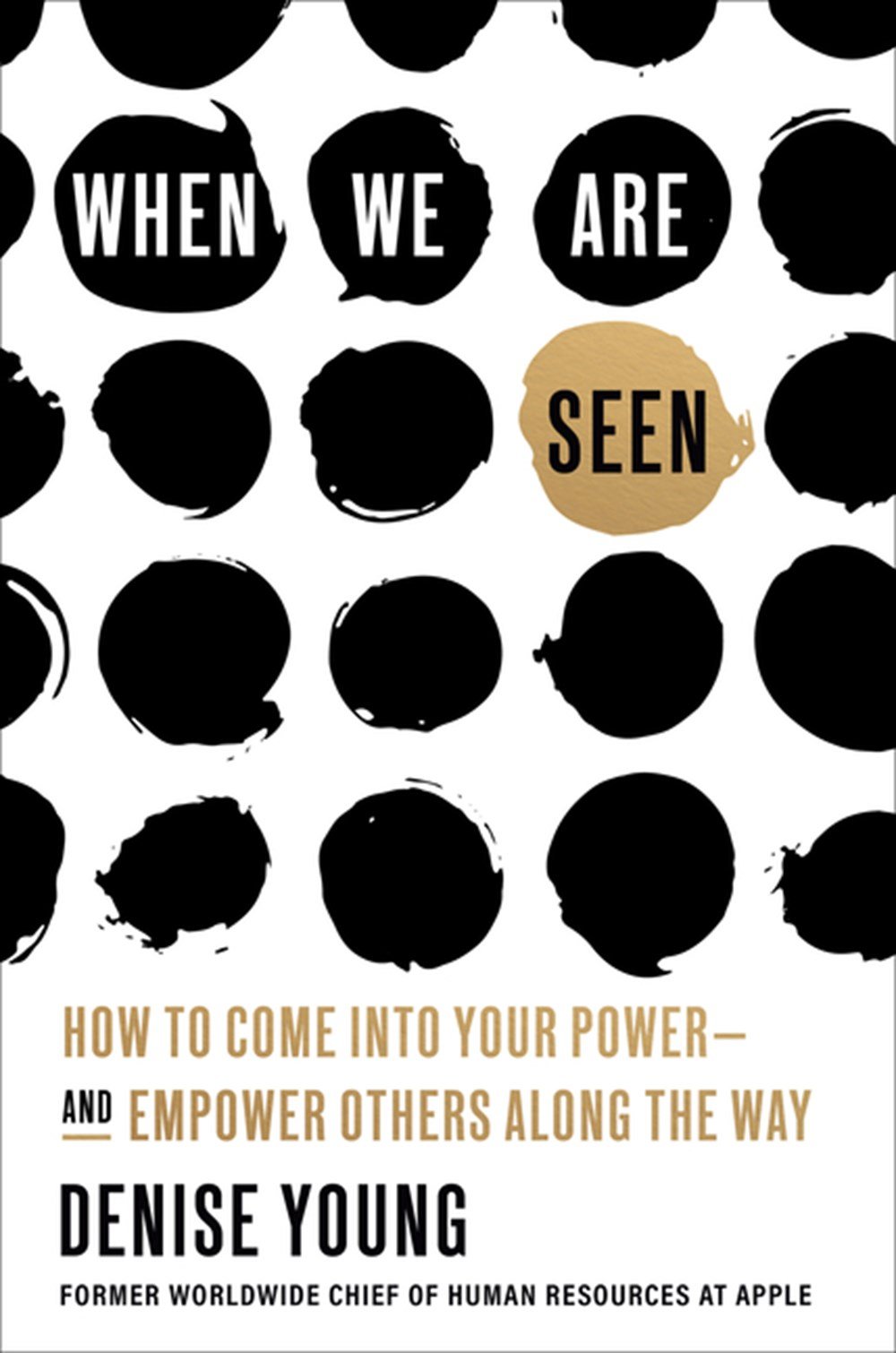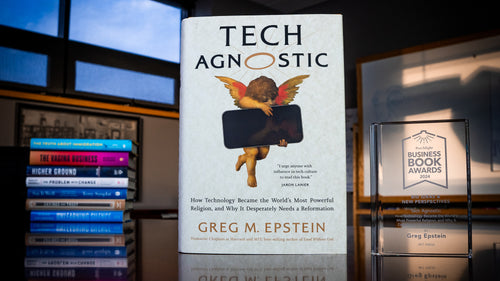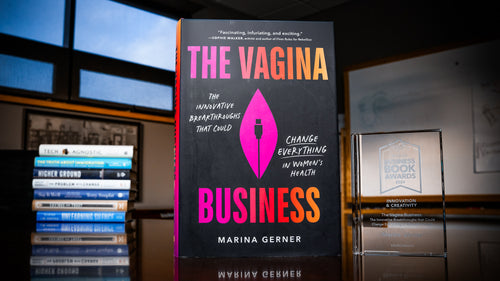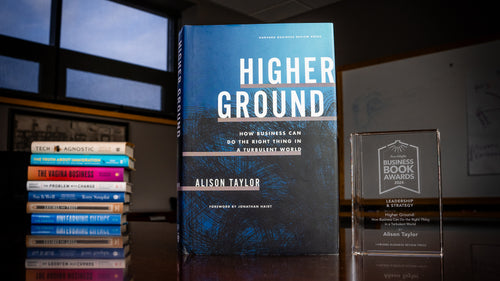An Excerpt from When We Are Seen
 For her work as a co-creator of the Apple Store cultural experience, Denise Young has been deemed by leadership experts as one of the most emotionally intelligent leaders of her era. In this stirring narrative, part-memoir, part blueprint for action, she shares her vision of what it means to be truly seen at our places of work. As a “first and only” woman of color in boardrooms and leading roles across the Bay Area’s booming tech industry, Denise was a trailblazer in a business that was never built for her. The first black and female senior executive under both Steve Jobs and Tim Cook, Denise was often in “the room where it happened.” But within a white male-centric professional culture, she still had to work harder, smarter, and differently to get heard. She speaks candidly to that experience in When We Are Seen, offering lessons to those coming up behind her.
For her work as a co-creator of the Apple Store cultural experience, Denise Young has been deemed by leadership experts as one of the most emotionally intelligent leaders of her era. In this stirring narrative, part-memoir, part blueprint for action, she shares her vision of what it means to be truly seen at our places of work. As a “first and only” woman of color in boardrooms and leading roles across the Bay Area’s booming tech industry, Denise was a trailblazer in a business that was never built for her. The first black and female senior executive under both Steve Jobs and Tim Cook, Denise was often in “the room where it happened.” But within a white male-centric professional culture, she still had to work harder, smarter, and differently to get heard. She speaks candidly to that experience in When We Are Seen, offering lessons to those coming up behind her.
The following excerpt comes from the book's Introduction.
◊◊◊◊◊
On Being Seen
The night of the opening of the Apple Store on Fifth Avenue in New York, I felt seen. It was May 19, 2006, and at 6 p.m. we opened the doors and greeted several hundred people who had been waiting in line since the night before. It was our second New York Apple Store and the first 24-hour Apple Store in the world, so everything about the opening had to go above and beyond all that had come before.
Steve Jobs hired Bohlin Cywinski Jackson—the architecture firm that designed many of the Apple Stores, as well as the Seattle home of Bill Gates—to create something magnificent that could entice customers to visit what was essentially a basement space on Fifth Avenue. The result was a cube-shaped design wonder that housed an underground retail store accessible via a glass elevator and transparent spiral staircase.
It wasn’t just the design that made headlines, but the vision to keep it open 24/7. The Stores leadership team was sitting around the table in Ron Johnson’s glass office when we first discussed the viability of a 24-hour store in New York. Ron had previously transformed Target and, alongside Steve Jobs, had envisioned the Stores from inception. (Yes, Store is capitalized, because these weren’t just any retail technology stores. These were the Apple Stores and, as we saw it then, an entirely new technology experience.) I was the head of HR and talent, responsible for the hiring and training of people and the culture within the Stores, an environment that proved ultimately transformative in the retail industry and beyond. I was, additionally, an active participant in the leadership decisions made for the Stores for more than a decade. I sat in countless meetings, debates, and discussions just like that one, where we obsessed over details small and large, such as the viability of an all-hours Store. Was the idea brilliant or completely inane?
We hashed out the concept, raising varying points of view, until I saw at least one path to the decision that I didn’t recall anyone else raising. New York has a world-class arts community, from theaters to arenas, clubs, and performing arts centers; every performer, worker, craftsperson, artist, technician, and vendor who works nontraditional hours and owns or wants to own an Apple product would likely become a customer of this Store, readily frequenting it at 2:00, 3:00, or 5:00 a.m.
I believed this because I had been familiar with this world since I was a child. My Brooklyn-born mother had made sure I was well acquainted with the art and culture of NYC. And the lives of my New York extended family, comprising night shift nurses, small business owners, researchers, photographers, and service workers, did not lend themselves to white collar conventionality. It was the recollection of the lives and journeys of my New York family, my Louisiana family, and my Colorado upbringing that informed the perspectives I’d share in that meeting and many others. In that conversation, my life experiences helped shape what would become a historic place not only for New York City, but also for the world. And of course, there was the fact that I was also the only Black woman executive in those rooms, contributing to the Apple Store vision and thought process—one that would make business history and a dent in culture as we knew it.
We believed that the city that doesn’t sleep needed an Apple Store that didn’t sleep, seeing and serving the people whose job it was to inspire, uphold, and serve the spirit of the city and the world. We also had the opportunity to serve another dimension of New York: the round-the-clock service population, those we have since deemed “essential,” the human infrastructure of the city. We could enable them by attending to their growing and aspiring tech needs at times they could better manage—after all, an iPod Shuffle or an iPod Nano with a thousand tunes in one’s pocket could be great company on a night shift, and for the pros, the switch to Intel processors for infrastructural IT could see its way to new enterprise activity.
The 24-hour store experience was envisioned as a people-first proposition, and this way of seeing the Apple Store Fifth Avenue experience would become part of Apple lore. In the “always open” vision we held for it, profit potential might not have made sense, but the opportunity to serve people certainly did.
The night we opened, there were many celebrities in attendance, along with the thousands of people who lined up to be first to see and experience the Store. The PR team briefed us on who we should expect: Mos Def, Harry Connick Jr., Spike Lee, and Dave Chappelle, among many others. Opening night would kick off our first 24-hour cycle, so Ron and I took the 11 p.m. shift to greet people at the top of the glass spiral staircase of the cube, as we nicknamed it. Soon, Mos Def and Dave Chappelle walked in and were guided toward us. Ron, in his always exuberant way, introduced himself and me. “Hi, I’m Ron Johnson. Welcome to our Fifth Avenue Apple Store. And meet Denise; she is our head of people for all the Apple Stores around the world.”
Dave Chappelle looked at me—obviously Black, female, and introduced as an important sounding Apple executive— and with a wry smile and a direct gaze he said, “Ah, sister, head of everything … how’s that going?” I laughed, nodded knowingly back, and said, “It’s going fine. It has its moments.”
“I bet,” he said, his smile now signaling curiosity.
He knew what I was saying. And I knew what he was saying with that famous grin. Only a year earlier, Chappelle had walked away from his highly rated television show, leaving a situation where he felt he was losing himself, his voice, his sense of integrity. Perhaps he saw me, that night, with a little more sensitivity.
For me, it was a moment of unique recognition—not just any recognition and not just from anyone—and it felt important. Despite the influence I might have had at Apple, and my central role in leading the Stores, here was a public figure, a celebrity from my own community, someone I had never met, acknowledging the importance of my presence there, offering a deep understanding of what it took for me to get there. As we say, it hit … different.
We chatted a bit about the design of the Store, then every one moved on. But that moment of being truly seen has stayed with me. Chappelle had the intuitive sense to recognize that life might’ve been a bit challenging and certainly interesting for this Black woman who stood before him atop a famous glass staircase, with a big job title at a world-renowned technology corporation. Few people witnessing the exchange would have recognized the significance of what was being said in those brief moments. But Chappelle did. I did. And for me, his response said much more. It said, “I understand what it means to see you here in this space, in this role. I get it. I see you, sis.”
What does it mean to “see” someone? “I see you” is a common phrase in my Black community. I love those three words, how they’re used, and how they make me smile every time I hear them. “I see you” can translate to “I applaud you; I recognize the truth, beauty, and realness of what you are doing.” The phrase says, I see what you have done, I see the value of you. It affirms, it connects; it validates and uplifts. One little phrase does and says so much, and even when this phrase is used in a social media context, where no one really knows anyone, it holds power.
At my workplace, as the first Black female senior executive at Apple, surrounded by peers who did not share my lived experience or background, I did not expect that same kind of awareness. As I was the only Black woman in so many rooms, my colleagues generally looked at it as an accolade that I succeeded where others had not. They did not register the fact that there were few “others” like me, although there were many like them. They were cognizant of the circumstances of their own paths to achievement but held little awareness of the added complexities of mine.
I rarely felt seen at work the way I did in other aspects of my life. This is common for women of color in technology, and in business in general. We talk about this, we build communities and networks to address it, we condition ourselves to it and knowingly accept positions understanding the baggage that comes along with it: that constantly being “othered” is exhausting and exasperating.
Over the course of my career, I learned to call on the resilience and determination of my upbringing to make my way in a world where I was frequently ignored, overlooked, unseen. It was never easy to navigate. But I had long ago determined it was what I had to do to work in this world, to earn money, resources, and means for my family and community. It was what I was taught to do in my era, it is what was modeled for me for generations and what I emulated. It was what we believed was expected by our ancestors, who held high standards and hopes for our achievement, based on their immense and often unfathomable sacrifices.
Along the way, though, something fascinating happened. Over time, I learned to lean into the fullness of my identity. Leaning into was different from Sheryl Sandberg’s “lean in” philosophy, often defined as a “give it your all” kind of action. For me, leaning into meant building a progressive level of comfort with who I was and what I brought with me. Leaning into meant absorbing, sitting with, embodying.
The word “into” as I am using it indicates a result, a change of state, a destination. It means looking back in our lives and revisiting the things, places, and ideas that make us feel most alive, most connected, and most inspired, and bringing those experiences forward, as if they were a special talisman to wear each day. It means applying life lessons in the same way we would business lessons learned on the job. Leaning into means losing the fear that if you do not see yourself reflected in the world—if you are a “first” or an “only”—the value of your experiences are worth more, not less, despite all the indicators that seem to tell us otherwise. And the more I leaned into, the more impact I noticed I was making and could make.
Over the course of my career, I felt deeply the amount of “othering” that came my way, but like many, I built muscles in spite and, actually, because of it. In a phrase, the more of me I became, the more me I was able to be. In time, I simply began to rely less upon others to see me, and to see myself and appreciate what I saw.
And who was I? This is a question we all must ask ourselves, to stay in touch with our authenticity and with the parts of us that can evolve and fuel our thriving. Who am I, what do I believe, and why? What parts of myself do I lead with? What needs to be seen and known? And what is important enough to hold within, protected from the casually uncaring or the culturally unaware? If I were starting a career now, I would ask these questions of myself and of a few trusted others every couple of years. The answers for me were clear enough, but I often was puzzled as to how it all applied to my work, when the profile I chased for years often named other attributes as the desired ones—the traits most of my male colleagues brought.
My career at Apple moved from recruiting for its Colorado manufacturing facility to become the first Black person—male or female—to sit in a C-level role at the company. I led teams that established more than four hundred Apple Stores around the world, as well as all talent and human resource functions for the company. I saw my mission as the human work fueling the success of the company’s technology.
I have seen a world and traveled a life path that my colleagues did not know, and only few had read about in sanitized history classes. I sat side by side with people who could not fathom my childhood rooted in a Jim Crow South through my family’s Louisiana roots. My colleagues had no contextual understanding of what I experienced and absorbed through lessons my parents shared at the dinner table throughout my upbringing. I was raised by people who remembered their own grandparents living one generation out of enslavement; parents who’d experienced Black Codes, navigated travel with a Green Book; grandparents who’d benefited from the Freedmen’s Bureau and western migration; aunts and uncles who’d fought with their lives for voting rights, who’d sat-in, marched, and solemnly attended the funerals of assassinated leaders through a television encircled in a living room. For whom, from several states west, Medgar, Malcolm, and Martin were household names. These were the historical realities of my family’s journey.
We all have our own unique backgrounds and we each make decisions about what we hold on to. I took every bit of mine with me and carried it into the front doors and conference rooms of Apple. It took time, but I learned to not diminish those elements of my life story, because in doing so, I was then diminished. And I realized that a diminished me was a less effective and unfulfilled version of me.
Excerpt from WHEN WE ARE SEEN by Denise Young. Text copyright (c) 2024 by Denise Young. Reprinted by permission of Crown at Penguin Random House. All rights reserved. Penguin Random House



